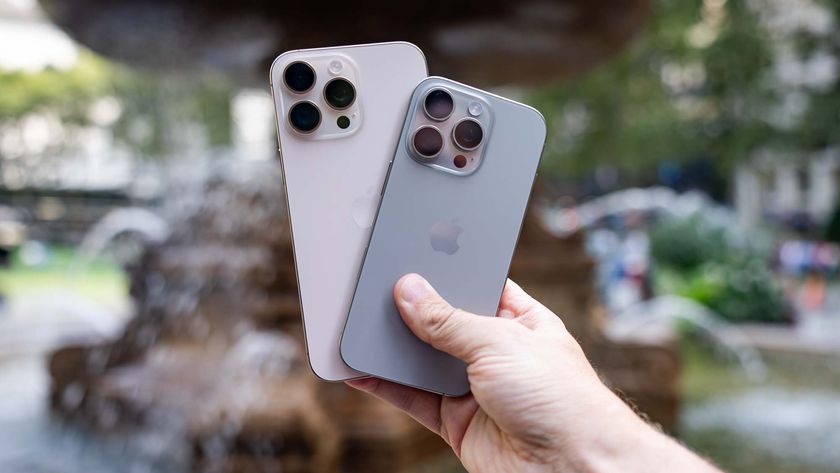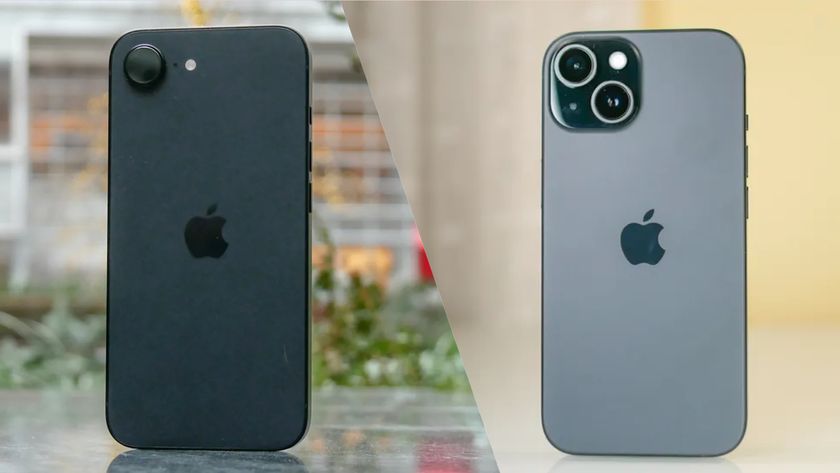iPhone 12 Pro vs. iPhone X: The biggest changes to Apple's flagship
Here are all the ways the iPhone 12 Pro improves on the iPhone X

These days, Apple is all about the iPhone 12 Pro, recognized by many as one of the best phones out there. But it wasn't that long ago that the original iPhone X was the talk of the town.
Debuting nearly four years ago, that first iPhone X rolled out a pretty radical design, one that Apple's used on all its subsequent flagship phones, including all four iPhone 12 models that came out last fall. The iPhone X's look proved so distinctive that Android phone makers rolled out a spate of lookalikes, even if they've subsequently moved on to new models that don't use an X-style notch.
- Best iPhones: What you can buy right now
- iPhones compared: iPhone 12 mini vs. iPhone 12 vs. iPhone 12 Pro
That's a sign that the iPhone X is getting up there in years. If you're still holding on to yours, it's probably time to consider an upgrade. And the iPhone 12 Pro looks like a very worthy option.
The iPhone 12 Pro may share a look with the iPhone X, but we that's where the similarities end. This iPhone 12 Pro vs. iPhone X face-off looks at what those differences are and why you'd be wise to consider an upgrade.
iPhone 12 Pro vs. iPhone X specs
| Row 0 - Cell 0 | iPhone 12 Pro | iPhone 12 Pro Max | iPhone X |
| Starting price | $999 | $1,099 | $999 |
| Screen size | 6.1-inch OLED (2532 x 1170) | 6.7-inch OLED (2778 x 1284) | 5.8-inch (2436 x 1125) |
| CPU | A14 Bionic | A14 Bionic | A11 Bionic |
| RAM | 6GB | 6GB | 3GB |
| Storage | 128GB, 256GB, 512GB | 128GB, 256GB, 512GB | 64GB, 256GB |
| Rear cameras | 12MP wide (f/1.6), 12MP ultra-wide (f/2.4), 12MP telephoto (f/2.0); LiDAR Scanner | 12MP wide (f/1.6), 12MP ultra-wide (f/2.4), 12MP telephoto (f/2.2); LiDAR scanner | 12MP wide (f/1.8), 12MP ultra-wide (f/2.4) |
| Front camera | TrueDepth camera (f/2.2) | TrueDepth camera (f/2.2) | TrueDepth camera (f/2.2) |
| Battery size | 2,775 mAh | 3,687 mAh | 2,716 mAh |
| Battery life (Hrs:Mins) | 9:06 | 10:53 | 10:49 |
| 5G | Yes | Yes | No |
iPhone 12 Pro vs. iPhone X price
The iPhone X caused a stir at the time it launched, with the largest price ever for an iPhone. At $999, the iPhone X cost $200 more than the iPhone 8 Plus that came out at the same time as Apple's 10th anniversary phone.
These days, people don't even blink at the thought of a $1,000 phone, as phone makers — including Apple — routinely offer phones with four-figure prices. The iPhone 12 Pro models continue that tradition, as iPhone 12 Pro costs $999 and the iPhone 12 Pro Max starts at $1,099.
If you've held onto your iPhone X, there's another figure that's worth paying attention to — your phone's trade-in value. As of this writing, Apple offers up to $220 off the price of your new iPhone 12 Pro if you trade in an iPhone X. We're also tracking the best iPhone 12 deals to find top discounts on the Pro models.
Sign up to get the BEST of Tom's Guide direct to your inbox.
Get instant access to breaking news, the hottest reviews, great deals and helpful tips.
iPhone 12 Pro vs. iPhone X design
Apple's latest phones still take their cues from the iPhone X in one visible way — that notch housing the front camera and sensors that support features like facial recognition and Memojis will still dip into the top of the display. The bezels on the iPhone 12 Pro models have gotten thinner, but the notch remains the same size. (If you want a smaller notch, hold out for the iPhone 13, as Apple's rumored fall release is expected to shrink the notch by as much as 25%.)
The new phones feature several design differences from the iPhone X, highlighted by flat edges reminiscent of the iPhone 5, instead of the slightly curved sides featured on the iPhone X and other recent Apple phones.

All of Apple's iPhone 12 models feature a Ceramic Shield display that makes the iPhone 12 Pro more likely to survive a drop without damage than older iPhone. The IP water resistance rating is more stringent, too — you can drop the iPhone 12 Pro into 6 meters of water, and it will survive for 30 minutes. The iPhone SE could only withstand a meter of water.
The latest models have gotten more colorful, with Pacific Blue joining Silver, Graphite and Gold as an option. The iPhone X came in Space Gray and Silver.
iPhone 12 Pro vs. iPhone X display
The iPhone X featured a 5.8-inch Super Retina display, and the iPhone 12 Pro comes in two models with bigger screens. The standard iPhone 12 Pro offers a 6.1-inch display while the iPhone 12 Pro Max lives up to its name by turning to a 6.7-inch panel. Last year, Apple's Pro phones upgraded to a Super Retina XDR display that offers improved brightness and better support for extreme dynamic range content — a feature that persists with the iPhone 12 Pro.

The iPhone X shows off more of the color gamut than the iPhone 12 Pro — 128.6% to 115.6%. Color accuracy is essentially the same with the iPhone X recording a 0.27 Delta-E rating to the iPhone 12 Pro's 0.28. (Numbers closer to zero are better.) We've since been able to test the iPhone 12 Pro Max, and it's one of the most color accurate screens we've ever seen, based on its Delta-E rating of 0.07.
There's no question which phone's screen is brighter — we measured the iPhone 12 Pro at 742 nits on a light meter compared to 574 nits for the iPhone X. The iPhone 12 Pro Max splits the difference at 662 nits.

(We're focusing on the iPhone 12 Pro — and the iPhone 12 Pro Max to a lesser extent — for this iPhone 12 Pro vs. iPhone X face-off, but Apple also introduced the iPhone 12 and iPhone 12 mini. The former's 6.1-inch display is larger than the iPhone X's, as well, while the iPhone 12 mini goes in the opposite direction with a 5.4-inch screen. Both models offer OLED panels, just like the iPhone X and the iPhone 12 Pro editions.)
iPhone 12 Pro vs. iPhone X cameras
It's safe to say cameras have gotten more sophisticated since the iPhone X made its debut. Back then, the iPhone X looked pretty cutting edge with dual rear 12MP cameras — a wide angle shooter with an f/1.8 aperture and a telephoto lens with an f/2.4 aperture. These days, the most expensive iPhones feature three lenses — a main camera, an ultra wide angle shooter and a telephoto lens.

And that's precisely what the iPhone 12 Pro has, though there are differences in the iPhone 12 Pro vs. iPhone 12 Pro Max camera optics. Both phones have a 12MP wide angle lens as their main camera, featuring a larger f/1.6 aperture. On the iPhone 12 Pro Max, though, the sensor is bigger, improving low-light performance for that particular model.
There's no difference in the 12MP ultrawide lens on either iPhone 12 Pro version, but the telephoto lenses on both phones have different apertures. (It's larger on the iPhone 12 Pro.) More importantly, focal lengths of the telephoto lens are different — 52mm on the iPhone 12 Pro versus 65mm on the iPhone 12 Max. That allows the Max to enjoy a larger optical zoom range over its smaller counterpart.
There's more than just an extra lens separating the iPhone 12 Pro lineup from the iPhone X. Apple has added a LiDAR sensor to its new phones, which improves portrait shots and low-light performance.

Beyond hardware improvements, Apple has also tweaked its software for taking photos. The iPhone 12 Pro and 12 Pro Max can take Night mode photos from every lens, and features like Smart HDR and Deep Fusion have been improved for the new phones. As good as the iPhone X was at picture-taking in its day, we now rate the iPhone 12 Pro Max as the best camera phone — and the iPhone 12 Pro is almost every bit as good.
iPhone 12 Pro vs. iPhone X performance
The A11 Bionic chip inside the iPhone X earned it the title of the fastest phone ever when we tested the device in 2017. That's a title each successive iPhone release has held on to, and the iPhone 12 Pro has done the same, thanks to its A14 Bionic chip.
Our iPhone 12 benchmarks show that the A14 not only outperforms recent iPhones but also extends the gap Apple enjoys over Android phones. We don't have an iPhone X around to run more modern benchmarks on, but suffice it to say, with the iPhone 12 Pro outperforming an iPhone 11 Pro Max on tests like Geekbench 5 and our timed video-encoding test, we wouldn't expect the iPhone X to fare any better.

Apple doesn't disclose how much RAM it puts into its phones, but the iPhone X came out at a time when Apple was a little stingy with the memory. Teardowns revealed the iPhone X had 3GB of RAM; similar teardowns have shown the iPhone 12 Pro models to have 6GB.
Storage in the base model of the iPhone 12 Pro has finally moved past the paltry 64GB Apple puts on its phones; both the iPhone 12 Pro and 12 Pro Max start at 128GB and scale up to 512GB.
The iPhone 12 Pro models can do something the iPhone X can't — connect to 5G networks. In fact, all four new iPhones include 5G connectivity, a first for Apple's phones. And thanks to extensive support for all kinds of 5G bands, the new phones work with every carrier's network in the US. If you're still using an iPhone X, you're losing out on 5G connectivity.
iPhone 12 Pro vs. iPhone X battery and charging
In addition to how much memory it includes in phones, Apple also doesn't talk up battery sizes, but the iPhone X had a 2,716 mAh battery. That helped the phone last a little less than 11 hours on our battery test, which was a pretty good result at the time.

We would have expected the iPhone 12 Pro to do better, but 5G is a demanding technology. When we tested the 6.1-inch model using our Tom's Guide battery test — continuous surfing over cellular networks until the phone runs out of power — the iPhone 12 Pro died after 9 hours and 6 minutes. Turning off 5G improved things dramatically, as the iPhone 12 Pro improved to a time of 11:24. That would have been good enough to land on the best phone battery life list.
At least things improved with the iPhone 12 Pro Max, which held out for 10 hours and 53 minutes on our battery test when surfing the web over 5G. That's better than the average smartphone and the best result of any iPhone 12 model by far.
The iPhone X was among the first Apple phones to support fast-charging, though you wouldn't know it from the 5W charger Apple included with its phones. But is it better to have an underpowered charger or none at all? That's a question iPhone 12 owners will ask themselves, as there's no charger included with your new phone. The move reduces e-waste, but it means people who want to take advantage of fast-charging support in the new iPhones will likely have to buy their own charger, like the 20W brick Apple offers for $19.

Apple added a new MagSafe feature to its iPhone 12 models that allows you to attach compatible accessories with magnets. In the case of wireless charging pads, that means a more secure fit, which should improve charge times. It also means springing for more accessories to charge your phone.
iPhone 12 Pro vs. iPhone X software
Here, the iPhone X and the iPhone 12 Pro find themselves on equal footing because of Apple's comprehensive support for older phones with its iOS updates. iOS 14 runs on phones as old as the iPhone 6s, so if you've got an iPhone X, you likely upgraded to the new OS before the iPhone 12 Pro was even an official product. And you can run iOS 14.5 on both phones, now that Apple's big software update is out.
That means you'll be able to benefit from features like revamped Widgets, the new App Library, Siri improvements, and enhancements to the Messages and Maps apps.

The one area where iPhone 12 Pro users might eventually have an edge is on features that rely specifically on the hardware that comes with Apple's new phones. Specifically, the LiDAR sensor included with the iPhone 12 Pro models could work with augmented reality apps built using the ARKit 4 tools included with iOS 14.
Apple makes its software updates available to all supported phones at once. So when the iOS 15 update arrives this fall, it will likely run on the iPhone X just as easily as the iPhone 12 Pro.
iPhone 12 Pro vs. iPhone X verdict: Time to upgrade
It's been more than three years since the iPhone X debuted, and Apple has introduced a lot of changes to its phone hardware since then. That's continued with the iPhone 12 Pro, making it a clear upgrade over its 3-year-old predecessor.
The addition of 5G connectivity, a new LiDAR sensor and a much faster processor place the iPhone 12 Pro well ahead of the iPhone X. What we've seen from the cameras and benchmark testing has only confirmed our suspicions about the new phones. You also get a larger display with the 6.1-inch iPhone 12 Pro — and the option to go even bigger now that the iPhone 12 Pro Max is available too.
We hope iPhone X users have been budgeting for an upgrade because the iPhone 12 Pro definitely improves upon this older device.
Philip Michaels is a Managing Editor at Tom's Guide. He's been covering personal technology since 1999 and was in the building when Steve Jobs showed off the iPhone for the first time. He's been evaluating smartphones since that first iPhone debuted in 2007, and he's been following phone carriers and smartphone plans since 2015. He has strong opinions about Apple, the Oakland Athletics, old movies and proper butchery techniques. Follow him at @PhilipMichaels.























